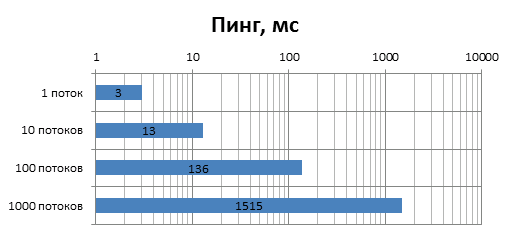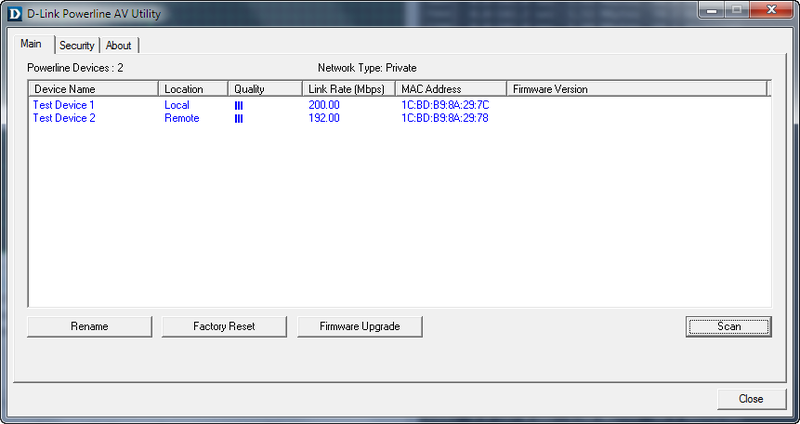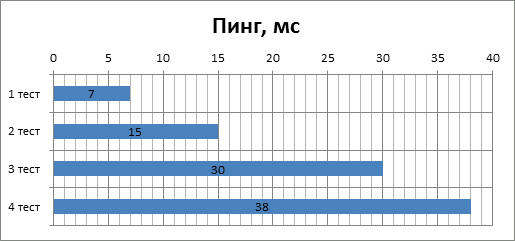D-Link PowerLine: DHP-306AV Review
 PowerLine technology is not something new and unusual. However, little is written about such devices and little is said. I find it difficult to judge the foreign market, but we have such adapters completely out of wonder. And this is understandable: this technology has enough flaws, but the devices for building a PowerLine network still don't cost a penny. At the time of publication of this article, the recommended price for the cheapest adapter from D-Link is $ 44. Probably not everyone in our country is willing to pay more than $ 80 in order to be able to abandon the laying of a twisted pair. Not to mention the fact that this is not an equivalent replacement.
PowerLine technology is not something new and unusual. However, little is written about such devices and little is said. I find it difficult to judge the foreign market, but we have such adapters completely out of wonder. And this is understandable: this technology has enough flaws, but the devices for building a PowerLine network still don't cost a penny. At the time of publication of this article, the recommended price for the cheapest adapter from D-Link is $ 44. Probably not everyone in our country is willing to pay more than $ 80 in order to be able to abandon the laying of a twisted pair. Not to mention the fact that this is not an equivalent replacement.I got a few devices from D-Link to deploy a PowerLine network, and in this article I will try to describe one (or rather two, because adapters are used in pairs) of them in as much detail as possible. This is a DHP-306AV.
A bit of theory.
As I have already noted, technology is not new, not a little is said and written about it. The network has both fairly accessible descriptions of technology , and comparative testing of existing adapters (for example: THG.ru: We build a network for wiring: tests of six adapters ). Therefore, I will try to dwell on, as it seems to me, insufficiently covered questions.
')
The name of the technology (PLC, Power Line Communication, and in Russian - data transmission through electrical wiring) can be understood ambiguously: the data is transmitted not just via electrical wiring, but through a real and working power network. The data encrypted with a special key is encoded into an analog signal with a frequency above 30 MHz, which later is superimposed on the existing ripple in the power network, which in our country is 50 Hz. On the fingers, this principle is represented in this picture:

This is one of the reasons why a device brought for example from the States will not start in our network, even if you select a suitable adapter. This is also why this adapter will not work in a network with active filtering: any surge protectors, uninterruptible power supplies and transformers will mercilessly crush the information component of the signal. On the other hand, as practice shows, the presence of such devices connected in parallel to the adapter, although not desirable, does not significantly affect the signal quality.
If we talk about speeds, here everything is still ambiguous. On the one hand, in recent years, technology has significantly made a step forward: if in 2001, the standard was speed up to 14 Mbit, today devices with figures of 200 and even 500 Mbit are produced on boxes. On the other hand, we are talking about physical speed. The actual data transfer rate is highly dependent on many factors and may be several times less. The quality of electrical wiring, twisting in the line, its heterogeneity - everything that is so inherent in our homes, destructively affects both physical speed and the speed and quality of data transmission. The physical speed declared by the manufacturer can be safely divided by 2, and deduct 10% for each power device in the house.
Well, the last thing that often raises questions is how several PowerLine-devices connected to one network will function. Everything is simple here: since the adapters work at the physical level of the OSI network model, then being included in one power network and synchronized with each other, they are, in essence, an ordinary network hub with all its capabilities and disadvantages.

Appearance and equipment.
The DHP-306AV doesn’t come with anything extra: device, patchcord, instruction, disk and cardboard box. Although perhaps this is enough.
The device looks nice and is made in white, relatively new to D-Link style. The power supply connector is located directly on the case, which provides a possible minimum of wires to the adapter. Perhaps I find fault, but in the kit, as usual, there is a “corporate” blue patchcord, which by no means harmonizes with the neat little white device.
The label directly on the device, in addition to the serial number and MAC address, also indicates the so-called “PLC PWD” - a unique password necessary to configure the adapter, which I recommend immediately writing in a convenient place for you. I myself ran to the outlet three times to input this password again and again into the configuration utility, which for some reason persistently forgot it.
Indication of the current state is made by three LEDs: the first informs about the device status, the second - the PowerLine network, the third - the Ethernet network. In general, such an indication is quite enough to judge the state of the device.

It must be said that the light from the indicators is not very bright, of a pleasant yellow-green color. I think this remark is especially important when many manufacturers sin in installing blue LEDs in bright eye-cutting devices.
All controls are on one side: this is a hardware reset button for the device to factory settings and a button for synchronizing two devices. On the same side is the connector 8P8C.

Software.
Devices of this kind do not have any web-interface, and it isn’t needed: buttons and three indicators on the case are enough to use the adapter comfortably. However, the HomePlug AV standard implies remote management of adapters, and the sync button allows you to connect only two devices to the network. Therefore, the review was not complete without a review of the D-Link PowerLine AV Utility, which is available for download from D-Link FTP .
I must immediately say that the program is not perfect, to put it mildly, and, looking ahead, I would say that perhaps this is the only thing that leaves an unpleasant impression of using the device. So, for example, from the threshold I was met by an unpleasant bug: the utility sees and can only manage devices connected to the first system network adapter. How much I did not try to make it work without disconnecting the main home network - I did not succeed.
Here is a small screencast describing all the charms of this program:
As you can see, there are enough problems. The program does not show the firmware version, the scanner does not always find the device, there are no indications, and the program itself occasionally pretends to be frozen. The “Quality” column always showed me three bars, which is at full speed, which is in the worst conditions, and I did not manage to link the Link Rate, which should display the physical speed between devices, to the actual connection speed. There is a number of usability errors: for example, I would prefer specific digits of signal attenuation in lines in dB for the signal quality stripes.
Testing.
Testing of devices was carried out in the usual apartment of a fairly old building, with all the problems of electrical wiring. A dual port Gigabit Intel® Gigabit ET Dual Port Server was used as a network adapter.
The network channel was programmatically tested using the iperf utility, which was sequentially launched with 1, 10, 100, and 1000 simultaneous connections. Each test was performed three times, for 5 minutes, after which the results were averaged. Two parameters were removed: data transfer speed and ping during data transfer.
It should be noted that the connection of the network ports of the PC directly showed a speed of 946 Mbit / s, and the average ping was 1 ms. From this data and can be repelled in testing PowerLine.
The first test is ideal conditions.
The first test was performed under ideal conditions: both adapters were plugged into adjacent sockets of the same 20-meter extension cord, i.e. the distance between the adapters was about 5 cm, and the distance from the nearest source of electrical interference was more than 20 meters. At this point, only the PC was connected to the power supply; the light was also turned off.

The utility showed perfect connection quality and Link-Rate at 190 Mbps. The test results were also excellent:


According to these graphs, it is clear that, despite AES encryption of traffic and its large volumes, the data transfer rate rests on the physical parameters of the line rather than on the performance of the device controller. It should also be noted that the connection was completely stable and no packet loss was observed.
The second test.
The second test was performed under conditions closer to real ones: the second adapter was moved to another outlet in another room. The network still had no other electrical appliances, but the rooms included about 5 energy-saving lamps, the presence of which, as the manufacturer claims, has a rather disastrous effect on the signal quality. Here is what the utility reported:

As you can see, the signal quality remained, supposedly perfect, and the physical speed decreased slightly. However, testing showed a speed of 68.9 Mbit / s with an average ping of 15 ms.
The third test.
The third test was performed under somewhat more difficult conditions for adapters: the second adapter was moved to the farthest room (in my case, to the bathroom), but the “ether” on the network still remained clean. By this time I had already ceased to be surprised at the data that the utility provided me, and I was not surprised now: she reported that the speed was higher:

The test performed at the same time showed that the conditions became really more difficult: the data transfer rate dropped to 36.4 Mbit / s, and the average ping rose to 30 ms.
The fourth test - the most difficult conditions.
Of course, we are talking about the most difficult conditions for my very small apartment: the device remains at the furthest outlet, but the TV, media player, refrigerator, washing machine and ionizer with a total power of about 5 kW were also included in the network.
Also in this test, the network included 8 energy-saving lamps, which, according to D-Link, have a very negative impact on the quality of the PowerLine-network. This results from the fact that each lamp has the pulse power supply unit which gives hindrances in a general network.
The utility reported that the situation is as follows:

At the same time, the data transfer rate decreased to 27.8 Mbit / s, and the average ping almost did not change and amounted to 38 ms.
General test results.
At the moment, I have nothing to compare with: this is the first PowerLine device that I managed to get to know quite closely. The diagrams below show changes in the characteristics of the communication channel in various conditions.


Looking at these diagrams, the first thing that comes to mind is a comparison with Wi-Fi: as you can see, the speed indicators are quite comparable. If we compare other aspects of these technologies, then against the mobility and convenience of Wi-Fi, the PowerLine has its trump card: high stability of the connection. During testing, I was surprised to find that neither power surges nor the switching on of power devices cause the connection to break. Another important aspect - PowerLine looks more secure. If the Wi-Fi password under certain conditions is quite possible to crack at the time of client authentication, then the connection is established using a pre-installed key, and hacking from a theoretical point of view is impossible. Although, if you remember what kind of traffic is usually chased through home networks, perhaps this is not a very important advantage.
Conclusion
First, a couple of final words about PowerLine. Yes, it is more expensive than using a conventional twisted pair. Yes, we will not always get an acceptable connection speed and quality. Yes, there are fairly widespread wireless standards that do not have all the above mentioned problems. Yes, use-case of this technology is not obvious. However, despite all the limitations and problems of use, this technology seems to me interesting and quite useful.
What is the application of PowerLine? Perhaps it can be used in cases where you need to provide access to the LAN for small devices with which there is no constant and active data exchange. For example, I tried to connect my Asus O! Play media player in this way and watch IPTV on it: the picture did not fall down, and the video never stopped, which I can’t say about Wi-Fi connection. Another immediately coming to mind example is the connection via PowerLine of VOIP devices. I have not tried it, but it seems to me there should be no problems, but it will save you from unnecessary wires.
As for the DHP-306AV, given that this is the youngest device in the line from D-Link, it showed quite good results, both in connection speed and in quality. In the next review I will try to consider more advanced models and compare their characteristics. In the meantime, you can confidently put a convincing top five to D-Link engineers.
The review devices are kindly provided by the Crimean representative office of D-Link in Simferopol.
I would like to express a special thanks for the help in conducting the testing to Artem Chikalkin and Yuri Prokopenko.
Source: https://habr.com/ru/post/137684/
All Articles